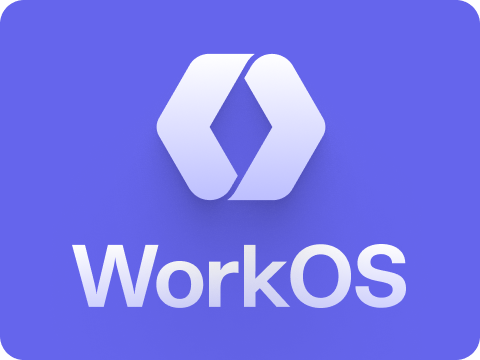By John Gruber

WorkOS simplifies MCP authorization with a single API built on five OAuth standards.
Linked List: April 5, 2010
Monday, 5 April 2010
- Alex Payne: The Moderate’s Position on iPad Openness ★
-
Thoughtful and reasonable.
Update: Although, I don’t understand his position on private APIs at all. I suppose he means not that Apple should document and allow the use of every single SPI on the system, but rather that Apple’s own apps shouldn’t be able to use private APIs if third-party developers can’t. My understanding though, is that Apple’s App Store apps do only use the public APIs. The built-in system apps — which run in the background, among other things — are obviously in a different class. Third-party developers will never get to write system-level apps for iPhone OS.
- The Mobile Web vs. the Objective-C Web ★
-
Cameron Moll, author of Mobile Web Design:
Frankly, as the adoption rate of iPhone increases and if iPad follows suit, it will become increasingly difficult to argue in favor of a starting point other than iPhone OS. The NPR iPad app, for one, provides a much more pleasant user experience than NPR.org.
The reason, I think, is that even if the people building iPhone apps would prefer, on general principle, to be building cross-platform open mobile web apps instead of banking on Apple’s closed proprietary platform, there’s no way to build cross-platform web apps that provide the same quality of user experience. The NPR iPad app is indeed terrific, and I don’t think it could be replicated as a mobile web app — at least not with the same amount of work, and not in a way that’s cross-platform.
- Playing Chess With Kubrick ★
-
Jeremy Bernstein recollects his time playing chess with Stanley Kubrick, while writing a profile of him for The New Yorker. (Audio excerpts from his interview with Kubrick are still available on YouTube.)
- iPad-Optimized Version of iPhone OS Reference Library ★
-
If you’ve got an iPad (or the SDK simulator), check out the iPad-optimized version of Apple’s iPhone OS developer docs. It’s an iPad-style UI implemented in HTML/CSS/JavaScript — it even has popovers.
Update: Peter Hosey explains how to enable this display mode in a WebKit-based browser on your Mac.
And the JavaScript behind this thing is a fork of PastryKit.
- Magazine Art Direction on the iPad ★
-
Video by Brad Colbow analyzing the art direction of three magazines’ iPad apps: Time, GQ, and Popular Science. Time and GQ both only work well in landscape — they lose much of their design when held vertically. (GQ looks particularly bad in portrait orientation.) Popular Science works equally well in both orientations.
I’ll add that Popular Science also has a better meta design than Time. Time
and GQis selling each issue as a separate iPad application. I’m not sure who Time thinks is going to spend $5 a week for a new Time app, but my guess is that his name is Joe Nobody. But regardless of per-issue pricing, who wants a separate app for each issue? Shouldn’t part of the advantage of digital distribution be that you can carry around many back issues? Who wants a page full of Time icons on their home screen?With Popular Science (as well as GQ), there’s one app, and all issues appear inside that one app. That’s clearly the right way to do this.
Update: I originally wrote that GQ was like Time — one app per issue — but it’s not. It’s one app with in-app purchasing for subsequent issues.
- iBooks and ePub ★
-
Good overview from Liza Daly regarding how iBooks handles ePub files.
Update: More from Liz Castro.
- First Day iPad Sales: 300,000 ★
-
Apple:
Apple today announced that it sold over 300,000 iPads in the US as of midnight Saturday, April 3. These sales included deliveries of pre-ordered iPads to customers, deliveries to channel partners and sales at Apple Retail Stores. Apple also announced that iPad users downloaded over one million apps from Apple’s App Store and over 250,000 ebooks from its iBookstore during the first day.
That means it outsold the original iPhone on day one. And the numbers don’t include pre-sold 3G iPads.
- Will It Blend? ★
-
Oy.
- Apple Announces iPhone 4.0 Event on Thursday ★
-
Invitation-only press event Thursday at Apple’s Town Hall.
- John Patrick on the iPad ★
-
John Patrick, former vice president at IBM:
When we introduced the ThinkPad in 1992 it seemed like a huge deal just to get everyone at IBM to agree with the name. No one, certainly not me as VP of marketing at the time, had any idea that more than 30 million ThinkPads would be sold. The iPad will surely sell multiple times that number but more important the iPad will change the model of personal computing — not immediately and not for everyone, but for many millions of people the PC will begin to look like a dinosaur.
- Denial of Expertise ★
-
Joe Clark on iPad critics:
This was the weekend those of us with high standards lost their remaining residue of patience for ideologues who hyperbolize about open systems without actually creating something people want to use.
Update: Fireballed. Change link to temporary cache for now.
